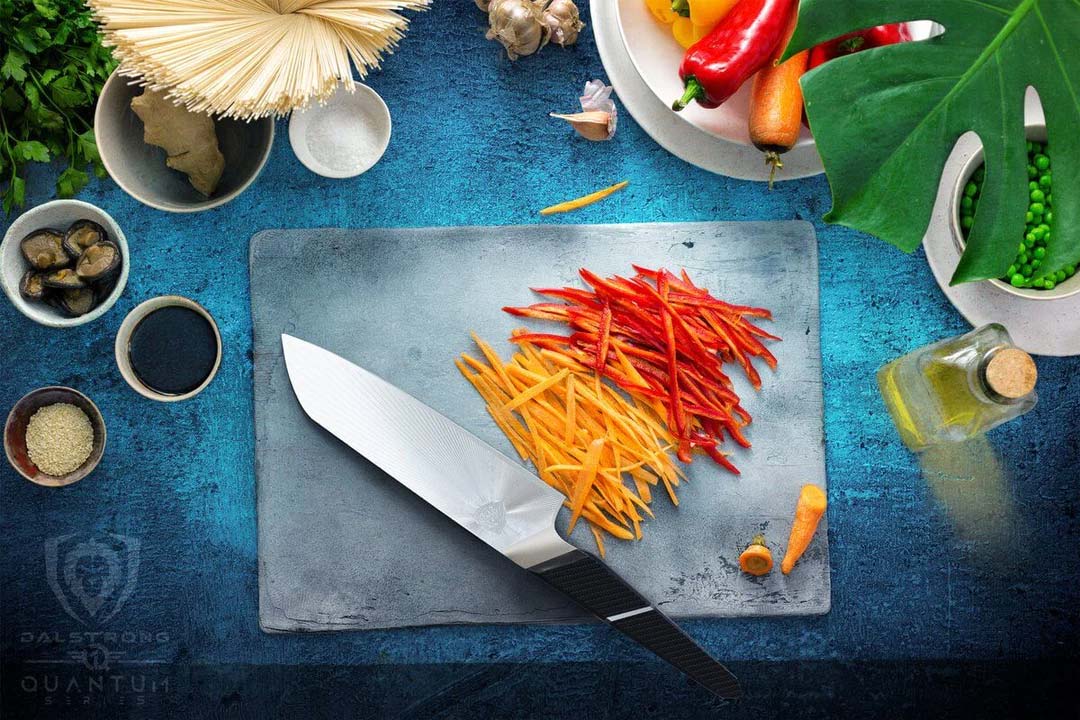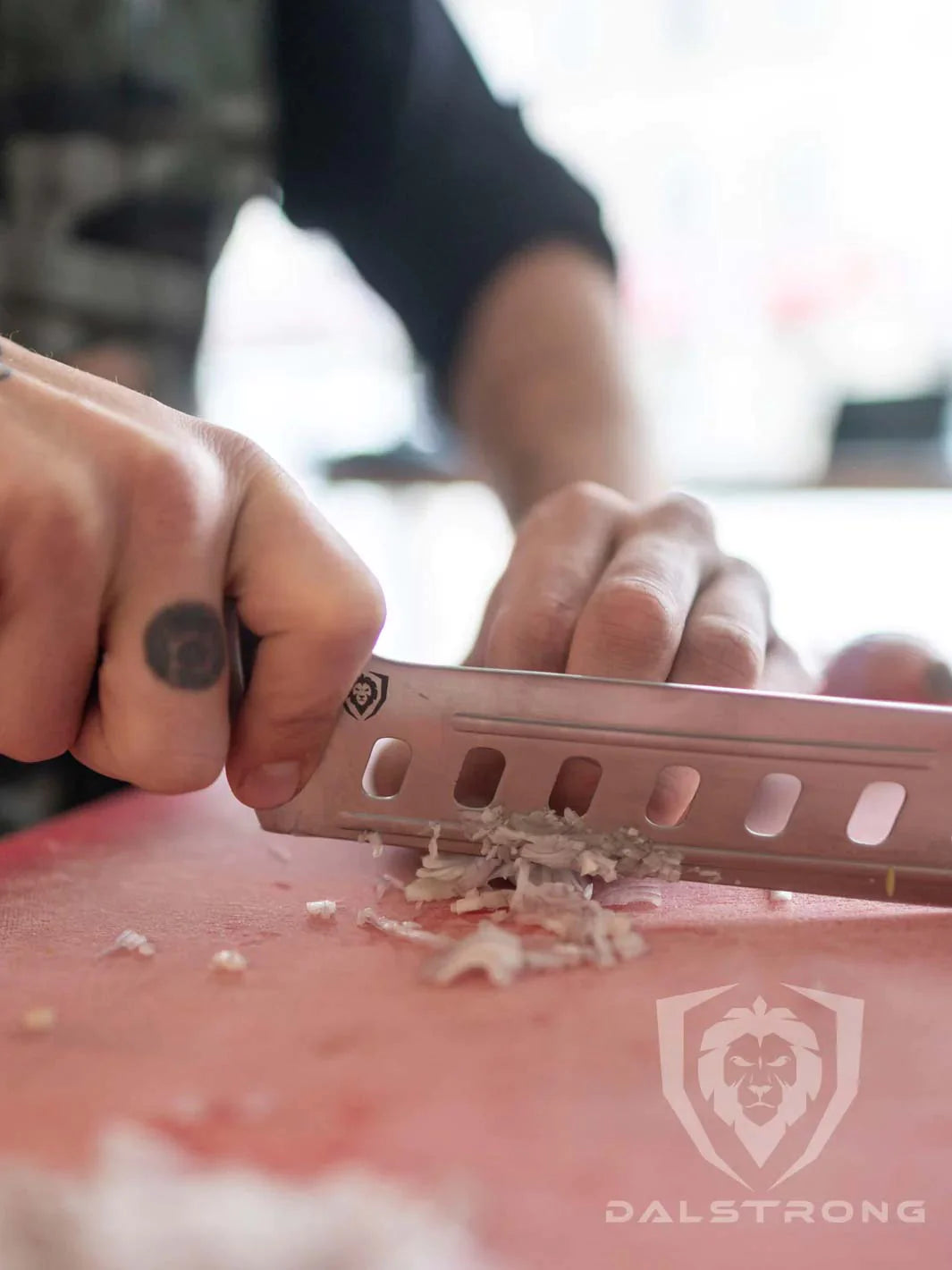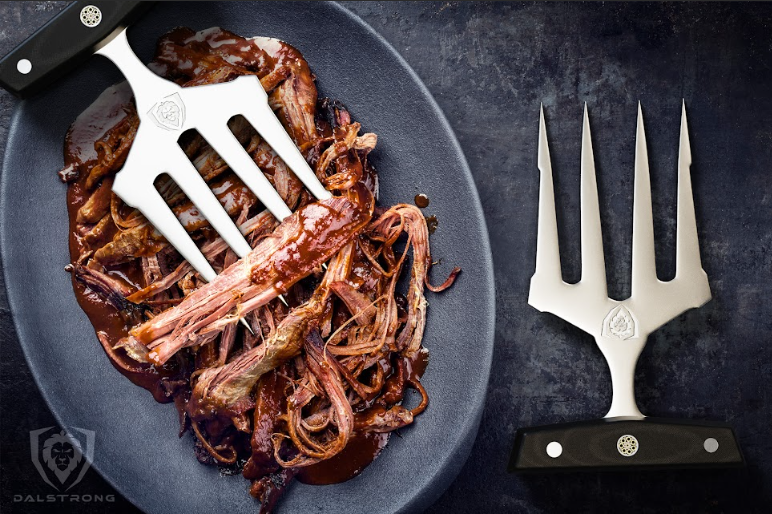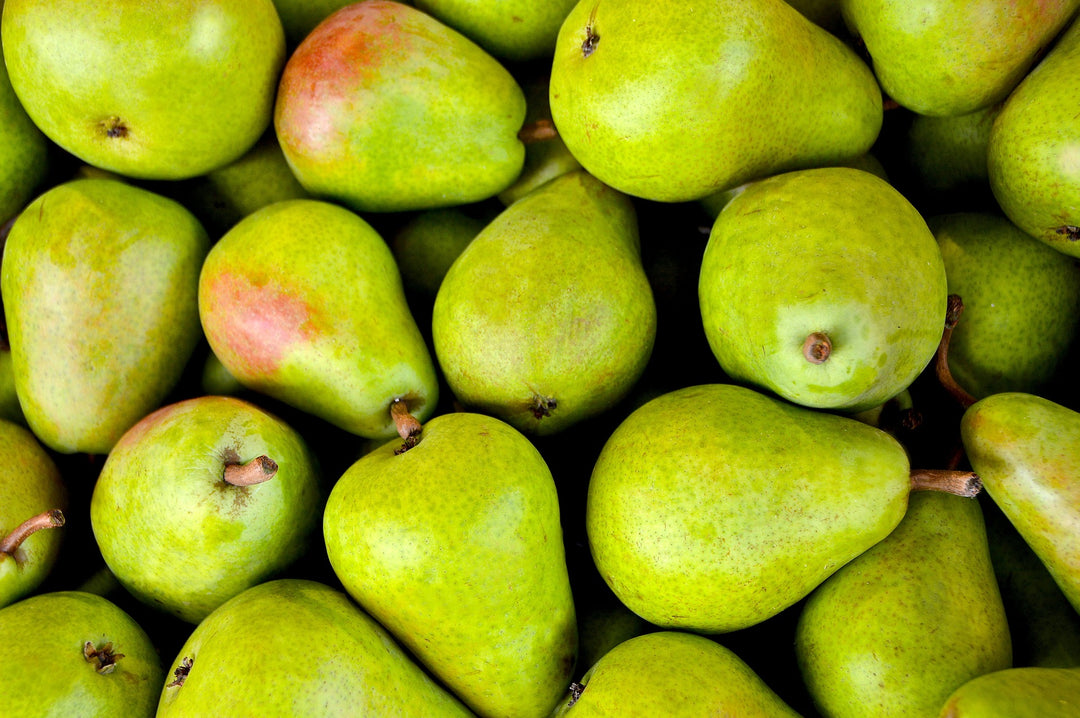How To Get Rust Off A Knife Effectively
Portable Whetstone Kit #1000 / #6000 Grit Combo with Oak Storage Box
Quick Overview: How To Get Rust Off A Knife
Imagine this: you reach into your kitchen drawer to grab your favorite knife, the one that slices through vegetables like butter and makes meal prep a breeze. But instead of the gleaming blade you remember, you’re met with unsightly rust spots. It’s frustrating, right?
Don’t worry, though – you don’t have to toss out your trusty tool just yet. With a little know-how and some household items, you can restore your knife to its former glory. Let’s dive into the step-by-step process of getting rust off a knife, so you can get back to cooking with confidence and ease.
1. Explanation Of Why And How Rust Forms On Knives
 Ceramic Coating Honing Rod 10"
Ceramic Coating Honing Rod 10"
Rust forms on knives primarily due to a chemical process called oxidation. This happens when iron in the steel reacts with oxygen and moisture in the environment. Here's a more detailed breakdown of why and how this occurs:
Why Rust Forms On Knives
- Composition of the Knife: Most knives are made of steel, which is an alloy that primarily contains iron. The presence of iron makes them susceptible to rust.
- Exposure to Moisture and Oxygen: When a knife is exposed to water (even in the form of humidity in the air) and oxygen, the iron in the steel reacts with these elements. This reaction forms iron oxide, commonly known as rust.
- Lack of Protective Coatings: Some knives are coated with protective layers to prevent rust, but if these coatings wear off or are damaged, the underlying metal becomes vulnerable.
- Environmental Conditions: Knives stored in damp or humid environments are more likely to rust. Salty environments, like coastal areas, can also accelerate the rusting process.
How Rust Forms on Knives
- Initial Contact: When the knife comes into contact with water and oxygen, it initiates the oxidation process. Even a small amount of moisture can start this reaction.
- Chemical Reaction: Iron atoms in the steel combine with oxygen atoms in the presence of water, forming iron oxide (rust). The chemical equation for this process is: Here, iron (Fe) reacts with oxygen (O₂) and water (H₂O) to form iron hydroxide (Fe(OH)₃), which eventually dehydrates to form rust.
- Spread of Rust: Once rust begins to form, it can spread quickly. Rust is porous and brittle, meaning it can flake off and expose more of the metal underneath to moisture and oxygen, leading to further rusting.
- Damage to the Knife: Over time, rust can weaken the metal, making the knife dull and potentially causing pitting or other forms of damage. This not only affects the knife's appearance but also its functionality and lifespan.
2. Safety Precautions
When it comes to handling knives, safety is paramount. Here are some key safety precautions to follow to ensure you stay safe while using, cleaning, and storing your knives:
Using Knives Safely
- Use the Right Knife for the Job: Always choose the appropriate knife for the task. Using a knife that is too small or too large can lead to accidents.
- Keep Knives Sharp: A sharp knife is safer than a dull one because it requires less force to cut. Dull knives can slip and cause injuries.
- Use a Cutting Board: Always cut on a stable surface like a cutting board. Avoid cutting on surfaces that are slippery or uneven.
- Hold the Knife Properly: Use a firm grip on the handle and keep your fingers away from the blade. Use the claw grip with your other hand to secure the food, tucking your fingertips inward.
- Cut Away from Your Body: Always cut away from yourself, not towards. This reduces the risk of cutting yourself if the knife slips.
- Pay Attention: Focus on what you’re doing. Avoid distractions when using a knife, as even a momentary lapse in concentration can lead to an accident.
Cleaning Knives Safely
- Hand Wash Knives: Avoid putting knives in the dishwasher, as the high heat and jostling can damage the blade and the handle. Hand wash them with warm, soapy water.
- Use a Brush or Sponge Carefully: When cleaning a knife, use a brush or sponge carefully, moving away from the blade. Avoid scrubbing the blade directly with your hand.
- Dry Immediately: After washing, dry knives immediately with a clean towel to prevent rust and water spots. Be cautious to avoid the sharp edge while drying.
3. Step-by-Step Rust Removal Process
Gladiator Series 8-Piece Knife Block Set
Removing rust from knives can help restore their appearance and functionality. Here's a step-by-step process to safely and effectively remove rust from your knives:
Preparation
Put on protective gloves to protect your hands from any sharp edges and cleaning agents.
Cleaning the Knife
Rinse the knife with warm water to remove any loose debris.
Choose a Rust Removal Method
Baking Soda Paste
Mix baking soda with a small amount of water to form a thick paste. Apply the paste to the rusty areas of the knife. Let it sit for 15-20 minutes to allow the paste to break down the rust.
Vinegar Soak
Pour white vinegar into a container large enough to submerge the knife blade. Place the knife blade in the vinegar and let it soak for 1-2 hours.
Lemon and Salt Scrub
Sprinkle salt over the rusty areas of the knife. Cut a lemon in half and use it to scrub the salt into the rust. The acid from the lemon helps dissolve the rust.
Scrubbing the Rust
After letting the rust removal agent sit for the recommended time, use steel wool or a scrubbing pad to scrub the rusty areas. Scrub gently in a circular motion to avoid scratching the blade. Apply more pressure if necessary to remove stubborn rust spots.
Rinsing and Drying
Rinse the knife thoroughly with warm water to remove any residue from the rust removal process. Dry the knife immediately with a soft cloth to prevent new rust from forming.
Polishing the Blade
If the knife still has some discoloration or minor rust spots, you can use a knife polishing compound or metal polish. Apply the polish to a soft cloth and rub it onto the blade in small circular motions. Wipe off the polish with a clean cloth and buff the blade to a shine.
Applying Protective Coating
To prevent future rust, apply a thin layer of mineral oil or food-safe knife oil to the blade. Use a soft cloth to spread the oil evenly over the entire blade and handle.
Storing the Knife Properly
Store the knife in a dry place, ideally in a knife block or on a magnetic strip. Avoid storing knives in damp environments or leaving them in water for extended periods.
By following these steps, you can effectively remove rust from your knives and keep them in good condition for years to come.
Read about how to store your knives the right way, here.
4. Tips To Prevent Rust From Forming On Knives
Preventing rust from forming on your knives is crucial for maintaining their sharpness, appearance, and longevity. Here are some practical tips to help keep your knives rust-free:
Tips to Prevent Rust on Knives
Keep Knives Dry
After washing, dry your knives immediately with a soft cloth. Leaving them wet can lead to rust formation.
Pay special attention to the area where the blade meets the handle, as moisture can get trapped there.
Hand Wash Only
Avoid putting knives in the dishwasher. The high heat, humidity, and harsh detergents can damage the blade and promote rust.
Instead, wash knives by hand with warm, soapy water and a non-abrasive sponge.
Use a Protective Oil
Apply a thin layer of mineral oil or food-safe knife oil to the blade after drying. This creates a barrier against moisture.
Make it a habit to oil your knives regularly, especially if you don’t use them often.
Proper Storage
Store knives in a knife block, on a magnetic strip, or in a drawer with a knife guard. Avoid storing them loose in a drawer where they can get scratched and collect moisture.
Ensure the storage area is dry and well-ventilated to prevent moisture buildup.
Avoid Prolonged Exposure to Acidic Foods
Acidic foods like tomatoes, citrus fruits, and vinegar can accelerate rusting. Rinse and dry your knife immediately after cutting acidic foods.
Regularly inspect your knives for any signs of rust or damage. Early detection allows for easy removal and prevents further corrosion.
Sharpen your knives regularly. A well-maintained edge is less likely to develop rust.
Use Rust-Resistant Materials
Consider investing in knives made from stainless steel or other rust-resistant materials. While not completely rust-proof, they are less prone to rusting than regular steel knives.
Avoid Soaking Knives
Do not leave knives soaking in water for extended periods. This prolonged exposure to water can lead to rust.
Keep Knives Away from High Humidity
If you live in a humid climate, consider storing your knives with silica gel packs to absorb excess moisture.
Ensure your kitchen has good ventilation to reduce overall humidity.
Clean After Each Use
Even if you just used the knife briefly, rinse and dry it to remove any food particles and moisture.
5. Must-Have Dalstrong Maintenance Tools
1. Dalstrong Premium Rust Eraser
The Dalstrong Premium Rust Eraser is a compact, easy-to-handle block made from high-quality abrasive materials. It’s specifically designed to tackle rust spots and surface stains on metal surfaces without causing damage to the blade. The eraser works by gently abrading the rust away, revealing the clean, shiny metal underneath. It’s suitable for use on a variety of knives, including stainless steel and high-carbon steel blades.
PROS:
- Quickly and effectively removes rust spots and stains, restoring the blade's appearance.
- Designed to be tough on rust but gentle on your knives, helping to maintain the integrity of the blade.
- Simple to use with no special skills required. Just rub the rust eraser on the affected area, and watch the rust disappear.
- Can be used on various types of knives and other metal tools, making it a versatile tool for kitchen maintenance.
- Small and lightweight, making it easy to store and carry around.
CONS:
- Best suited for surface rust and stains. Deep pitting or severe rust may require more intensive treatment.
2. Portable Whetstone Kit #1000/#6000 Grit Combo with Box
This Portable Whetstone Kit features a dual-sided whetstone with #1000 grit on one side and #6000 grit on the other, providing a comprehensive sharpening solution. The #1000 grit side is perfect for repairing and sharpening dull blades, while the #6000 grit side offers a fine polish, giving your knives a razor-sharp edge. The whetstone comes housed in a beautifully crafted oak storage box, which not only provides protection and portability but also adds a touch of elegance to your kitchen.
PROS:
- The #1000 / #6000 grit combination offers versatility, allowing for both sharpening and polishing in one compact tool.
- Made from durable, high-quality materials that ensure long-lasting performance and effective sharpening.
- The oak storage box not only protects the whetstone but also adds an aesthetic appeal, making it a stylish addition to your kitchen.
- The compact design and storage box make it easy to carry and store, ideal for both home and on-the-go use.
- Provides a complete sharpening solution, from repairing dull edges to honing and polishing, ensuring your knives stay in optimal condition.
- Often includes a non-slip base or holder to keep the whetstone steady during use, enhancing safety and ease of use.
CONS:
- Using a whetstone effectively can require some practice and skill, which might be challenging for beginners.
3. Whetstone Kit #1000/#6000 Grit with Nagura Stone & Rust Eraser
The Premium Whetstone Kit includes a dual-sided whetstone with #1000 grit on one side for sharpening and #6000 grit on the other for fine polishing. The #1000 grit side is ideal for restoring dull blades, while the #6000 grit side gives your knives a razor-sharp, polished edge. The kit also comes with a Nagura stone, used to clean and maintain the whetstone, ensuring optimal performance. Additionally, a rust eraser is included to effectively remove any rust spots from your knives, keeping them looking and functioning like new.
PROS:
- The combination of #1000 / #6000 grit provides both sharpening and polishing in one versatile tool.
- The Nagura stone helps to clean and condition the whetstone, ensuring it remains effective and extends its lifespan.
- The rust eraser is a handy addition for maintaining the appearance and integrity of your knives by removing rust.
- Suitable for both home cooks and professional chefs, providing a comprehensive toolset for maintaining knives.
CONS:
- Care must be taken to avoid damaging the whetstone and your knives, including using the correct sharpening angles and techniques.
4. Premium Whetstone Set #3000 / #8000 Grit
This Premium Whetstone Set features a dual-sided whetstone with #3000 grit on one side and #8000 grit on the other. The #3000 grit side is ideal for refining and sharpening your knife’s edge, providing a smooth and precise cut. The #8000 grit side offers an ultra-fine polish, bringing your knives to a razor-sharp, mirror-like finish.
PROS:
- The #3000 / #8000 grit provides both fine sharpening and ultra-fine polishing, giving your knives a professional-grade finish.
- The #3000 grit refines the blade's edge, while the #8000 grit ensures a razor-sharp, polished finish, perfect for detailed and delicate cutting tasks.
- Made from durable, premium materials that ensure long-lasting performance and consistent results.
- Often includes a non-slip base or holder to keep the whetstone steady during use, enhancing safety and ease of use.
CONS:
- Achieving the perfect edge with a whetstone can be more time-consuming compared to electric sharpeners or other quick methods.
5. Premium Whetstone Set #400 / #1000 Grit
This Premium Whetstone Set features a dual-sided whetstone with #400 grit on one side and #1000 grit on the other. The #400 grit side is perfect for repairing and reshaping very dull or damaged blades, offering a coarse sharpening surface that quickly restores the edge. The #1000 grit side is ideal for regular sharpening, providing a finer edge that is sharp and ready for everyday use.
PROS:
- The #400 grit side is excellent for repairing and reshaping very dull or damaged blades, making it a versatile tool for blade maintenance.
- The #1000 grit side is perfect for routine sharpening, keeping your knives in optimal condition for daily use.
- Made from durable materials that ensure consistent and effective sharpening over time.
CONS:
- Care must be taken to avoid damaging the whetstone and your knives, including using the correct sharpening angles and techniques.
6. Frequently Asked Questions
Can you get rust off a knife?
Yes, you can get rust off a knife, especially carbon steel kitchen knives. Use sharpening stones to gently rub the rust off the blade of your knife. Start with a coarser grit and finish with a finer grit to restore the blade's sharpness and shine. Regular maintenance prevents future rust formation.
What is the fastest way to remove rust from metal?
The fastest way to remove rust from metal is to use a rust remover spray or gel. Apply the product to the rusty area, let it sit for the recommended time, then scrub with a wire brush or steel wool. Rinse and dry thoroughly to prevent further rusting. This method is quick and effective for most metal surfaces.
Can you restore a rusted knife?
Yes, you can restore a rusted knife. Use a rust remover or make a paste with baking soda and water. Apply it to the rusted areas, let it sit, then scrub with steel wool or a soft brush. Rinse and dry thoroughly. For carbon steel kitchen knives, finish with sharpening stones to restore the blade's sharpness.
Does vinegar remove rust?
Yes, vinegar removes rust effectively. Soak the rusty metal item in white vinegar for a few hours or overnight. The acetic acid in the vinegar reacts with the rust, loosening it. After soaking, scrub the item with a brush or steel wool to remove the rust. Rinse and dry thoroughly to prevent further rusting.





















































































































































































































































